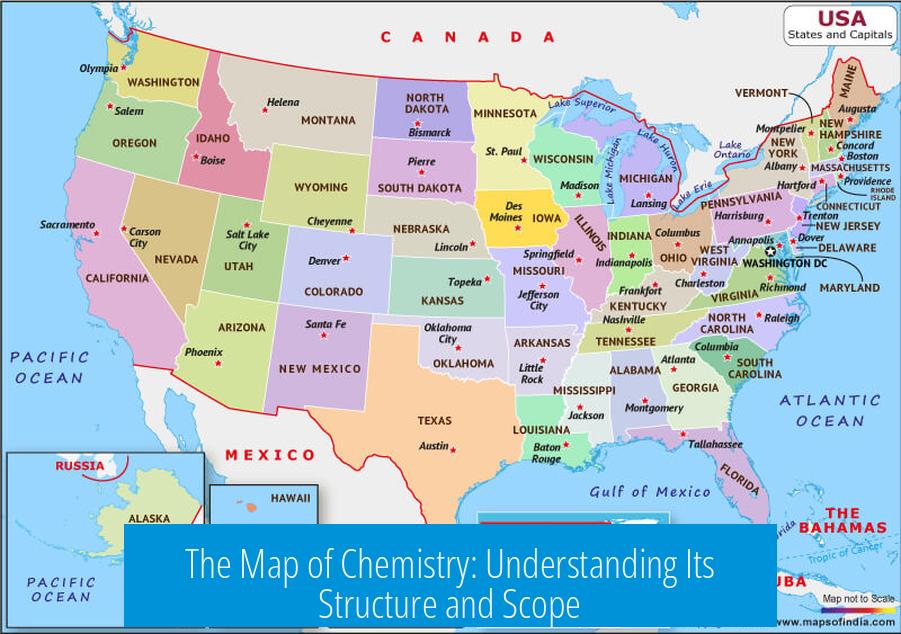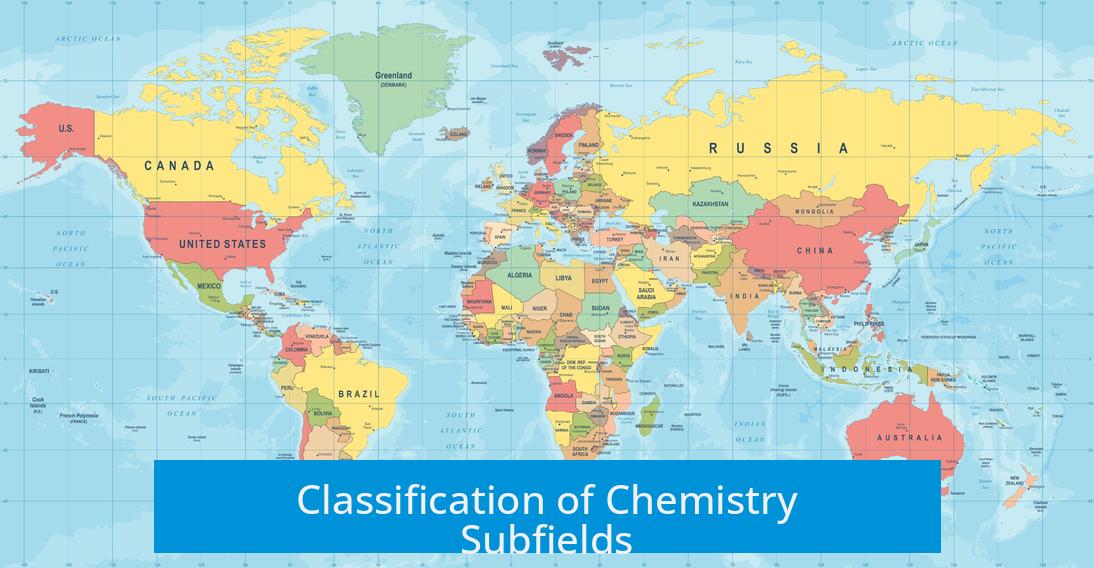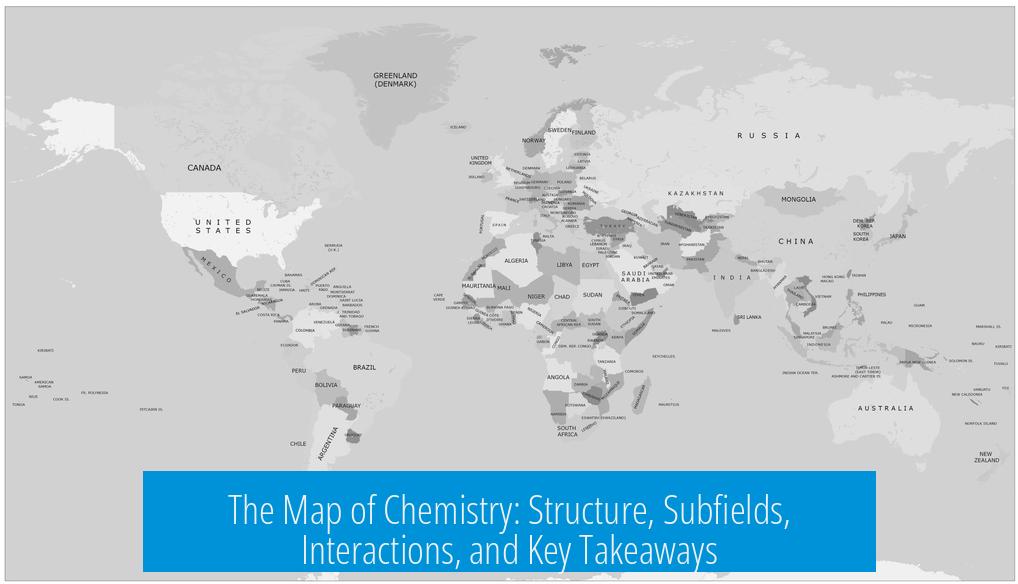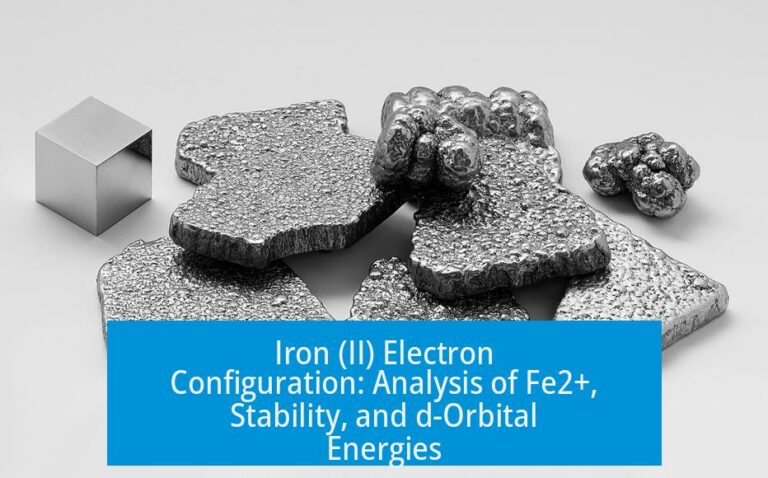The Map of Chemistry: Understanding Its Structure and Scope

The map of chemistry is a visual and conceptual framework that organizes the diverse subfields, topics, and interactions within the chemical sciences. It highlights relationships among branches like analytical, organic, inorganic, physical, and materials chemistry while presenting challenges in fully representing all chemical disciplines and phenomena.
Classification of Chemistry Subfields

The map groups chemistry into traditional and emerging areas. Electrochemistry is typically placed under analytical chemistry according to the American Chemical Society (ACS), though many argue it aligns better with physical chemistry. Materials science crosses the organic, inorganic, and physical chemistry boundaries, reflecting its interdisciplinary nature. Geochemistry often feels peripheral, blending analytical techniques with geological contexts.
Representation of Chemical Bonds and Interactions
The depiction of chemical bonds on the map raises debates. Dative bonds, where electrons are donated from one atom to another without equal sharing, warrant recognition. The conventional portrayal of hydrogen bonds sometimes misrepresents charge distribution; oxygen is usually partially negative while hydrogen carries a partial positive charge. Ionic interactions, such as between Na+ and Cl-, are generally non-redox electrostatic attractions but confusion arises regarding their classification.
Included and Excluded Topics
Some key areas receive limited attention. Nuclear and radiochemistry are often excluded despite their significance. Fertilizers, while mostly organic compounds, are not distinctly categorized. Nuclear magnetic resonance (NMR), a pivotal analytical technique, is surprisingly omitted. Biomolecules such as penicillin, a peptide product of large proteins, lack proper representation in the biomolecular sector.
Critiques and Impressions of the Map
The map’s usefulness is acknowledged, serving as a guide for students and professionals alike. However, some find it insufficiently informative for display purposes. Its symbolic nature is debated since a true map includes spatial relationships, while this depiction focuses on thematic connections. Users appreciate accompanying resources like explanatory videos and relate the map to similar projects in math and biology.
Additional Observations
- Uncommon tools like Feynman diagrams occasionally intersect chemistry, mainly in theoretical contexts.
- The poster’s design may be inspired by geographic shapes, adding aesthetic appeal.
- Humorous elements, such as the discovery of cake, bridge engagement and scientific topics.
Key Takeaways
- The chemistry map organizes key subfields and shows interdisciplinary overlaps.
- Bond representations like dative and hydrogen bonds spark ongoing discussions.
- Some sub-disciplines and techniques, such as nuclear chemistry and NMR, are underrepresented.
- The map serves as a helpful educational tool, though its format limits completeness.
- Supplementary materials and comparisons to other science maps enhance understanding.
What subfields in chemistry overlap beyond traditional classifications?
Materials science crosses organic, inorganic, and physical chemistry. Electrochemistry is placed under analytical chemistry by ACS but aligns more with physical chemistry.
Why are some chemical bond representations, like dative and hydrogen bonds, debated?
Dative bonds often get overlooked. Charges on hydrogen bonds seem reversed since hydrogen is typically positive, not negative in water molecules.
Why are nuclear chemistry and NMR missing from the chemistry map?
The map excludes nuclear and radiochemistry topics. Nuclear chemistry and NMR are notable gaps in the content.
How accurate is the chemistry map as a “map” according to critiques?
Some argue it lacks true map qualities, focusing more on symbolic themes than spatial or relational accuracy.
Are there additional resources to complement the chemistry map?
Yes, there’s a video that complements it. Other science posters like math and quantum science are available for better context.





Leave a Comment